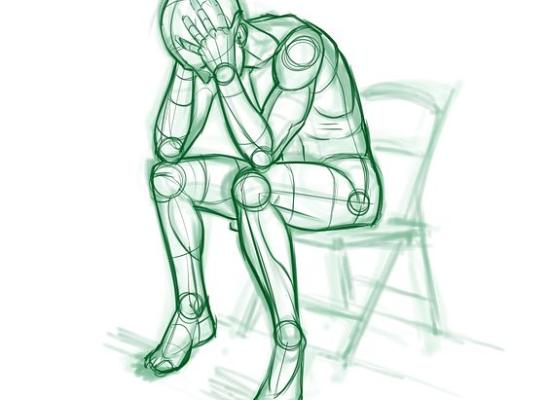Anxiety plan for BFRBs in children

Online test
Find out the severity of your symptoms with this free online test
Body-focused repetitive behaviors (BFRBs) such as skin picking or scratching and nail biting can be physically and socially debilitating. Given the potential consequences associated with these behaviors, it is unfortunate this area has received relatively limited attention.
Onset and prevalence of BFRBs
BFRBs are among the most poorly understood, misdiagnosed, and undertreated groups of disorders. BFRBs may affect at least 1 out of 20 people. Trichotillomania alone is believed to affect 10 million people in the United States. BFRBs most often begin in late childhood or in the early teens. The cause of BFRBs is unknown. Emotional variables may have a differential impact on the expression of BFRBs. Researchers are investigating a possible genetic component.
Prevalence of body-focused repetitive behaviors in three large medical colleges of karachi: a cross-sectional study
Results
The overall prevalence of BFRBs was found to be 46 (22%). For those positive for BFRBs, gender distribution was as follows: females 29 (13.9%) and males 17 (8.1%). Among these students, 19 (9.0%) were engaged in dermatillomania, 28 (13.3%) in trichotillomania and 13 (6.2%) in onychophagia. High proportions of BFRBs are reported among medical students of Karachi. Key health messages and interventions to reduce stress and anxiety among students may help in curtailing the burden of this disease which has serious adverse consequences.
Source: (https://www.ncbi.nlm.nih.gov/pmc/articles/PMC3508914/ )
What role do parents play in the treatment process?
The first thing parents need to do is to educate themselves about the disorder and what constitutes good treatment. This will allow them locate a good treatment provider. This may require interviewing several therapists to find one who is willing to learn about BFRBs and its treatment, since few therapists are trained to treat BRFRs. It is helpful, both for the parent and child to be involved in the treatment process. Children do best in treatment when their parents are supportive and loving, without adding pressure, judgment, or expectations. BFRB is not life-threatening and should not be treated as a crisis situation.
The Anxiety Plan for Body Focused Repetitive Behaviours (BFRB) - Trichotillomania (TTM) and Skin Excoriation (SE)
 The following strategies are designed for parents, to use with their child as s/he begins to tackle his/her BFRB- either trichotillomania or Skin picking disorder. These strategies are best used for children with mild to moderate signs of this type of problem. For children with more severe symptoms or who have been diagnosed with either Trichotillomania or Skin picking disorder, treatment with a mental health professional is recommended, although M.A.P. strategies can be used at home to support your child’s therapy work.
The following strategies are designed for parents, to use with their child as s/he begins to tackle his/her BFRB- either trichotillomania or Skin picking disorder. These strategies are best used for children with mild to moderate signs of this type of problem. For children with more severe symptoms or who have been diagnosed with either Trichotillomania or Skin picking disorder, treatment with a mental health professional is recommended, although M.A.P. strategies can be used at home to support your child’s therapy work.
Step 1.
Helping your child become an expert on stress and/or anxiety and trichotillomania.
This is a very important first step, it helps children and teens understand what is happening to them when they experience stress and anxiety. Support your child in becoming an expert on anxiety by providing him or her with facts and important information.
Step 2
Teaching your child or teen about BFRBs
Reading or explaining some of the information outlined on the Body Focused Repetitive Behaviours can help your child feel more in control of what is happening to him or her. Knowledge is power.
Step 3
Creating your child’s M.A.P.( My Anxiety Plan)
The best way to help your child deal with TTM or SE is to give him or her tools that can be used to cope with the symptoms, urges, and behaviours associated with hair pulling or skin picking. These tools are intended to increase your child's ability to tolerate stress and anxiety, rather than to eliminate stress and anxiety, you can use any or all of the following anxiety tools to create your child or teen’s M.A.P. (My Anxiety Plan). These tools are listed in a recommended order, although proceeding in this order will depend on the needs and interests of your child or teen.
Talking to Your Child or Teen about Anxiety
Talking about anxiety normalises it, making it easier for the child to ask for help and talk to to about it. You can help your child talk about anxiety by addressing the following topics.
- When Anxiety Becomes a Problem: What’s Normal and What’s Not
- Naming the Bully
- Learning to Relax: Calm Breathing
- Learning to Relax: Muscle Relaxation
- Balanced Thinking
- Cognitive Coping Cards
- Methods for Addressing Body Focused Repetitive Behaviours
- Addressing Excessive Reassurance Seeking
- Overcoming Perfectionism
- Tolerating Uncertainty
- Rewarding Bravery
Source: (https://www.anxietybc.com/parenting/my-anxiety-plan-body-focused-repetitive-behaviours )
Online test
Find out the severity of your symptoms with this free online test
Start your journey with TrichStop
Take control of your life and find freedom from hair pulling through professional therapy and evidence-based behavioral techniques.
Start Now



